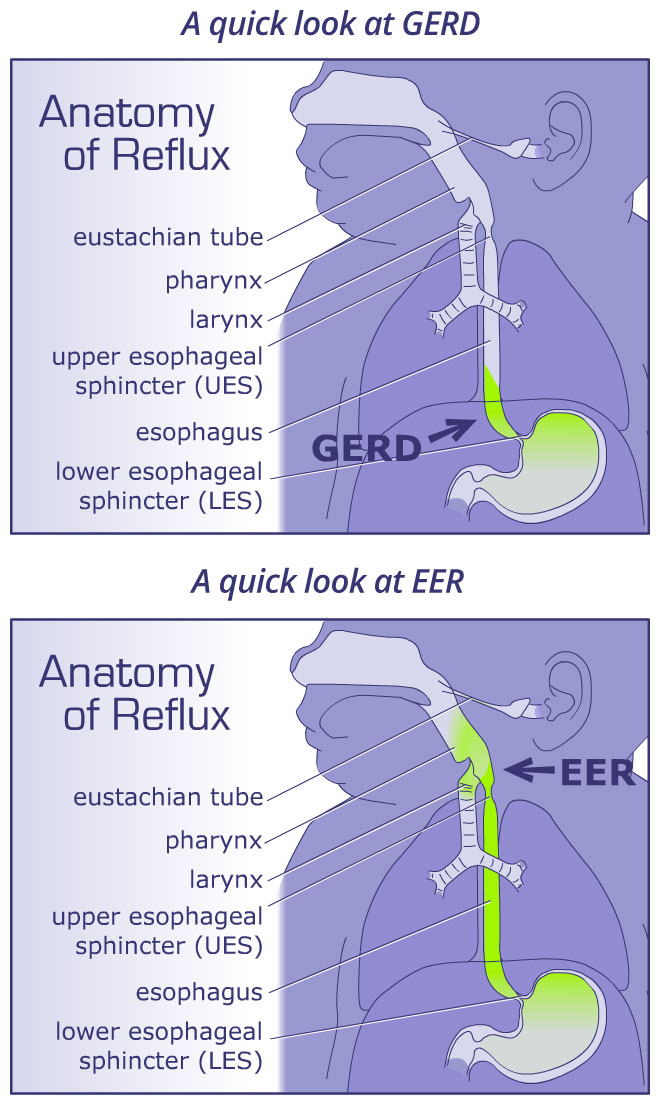Difference Between GERD and EER
|
To properly explain the difference between GERD and EER we'd like to explain what GER is. Gastro-Esophageal reflux (GER) is movement of gastric contents into the esophagus that results primarily from transient relaxation of a valve-like structure at the entrance to the stomach called the lower esophageal sphincter. Adults may sometimes
experience GER as "heartburn" because hydrochloric acid in gastric fluid
irritates nerve endings in the esophagus. Adults are considered to have GERD if heartburn is frequent (more than 2 times a week), severe, or prolonged. If pain is not accompanied by any damage to the esophagus, the condition is termed is non-erosive reflux disease or NERD. If the reflux also causes inflammation and ulceration of the esophagus, the diagnosis is erosive esophagitis. Untreated, GERD can lead to a precancerous condition known as Barrett's esophagus. |
 |
Transient relaxation of the lower esophageal sphincter occurs periodically throughout the day, reflux can be considered a normal physiological process in people of all ages. But babies tend to have more reflux events than adults due to the immaturity of their lower esophageal sphincter function. This results in periodic episodes of "spitting up." For most babies, these spit up or vomiting episodes don't cause any problems, and they typically outgrow their symptoms in their first year as their sphincter function matures. By contrast, babies with GERD may vomit excessively, cry inconsolably or be chronically irritable. So when there is long term issues and pain involved with the spit up and reflux, that's when it's considered reflux disease.
The difference between GERD and EER Continued
What is EER?
Both GERD and EER can be effectively treated by controlling the symptoms of infant acid reflux. This is where the Marci Kids study and using a PPI dosing regimen specific to your baby's age and weight.
Most of the families we work with have heard about MarciKids. For medical literature that supports MarciKids and what we do here at Infant Acid Reflux Solutions please visit the Medical Articles page . If medications don't resonate with your values as a parent, please see our other treatment options and consider working with one of our coaches or alternative treatment specialists.
Some of the contents of this page originate from the Marci-Kids website and
from Jeffrey Phillips Pharm. D. and his research in treating infants with acid
reflux while at the University of Missouri.
For those using Firefox you can use the interactive image below to display different functions and how EER and GERD differ. Click on each section of the digestive system shown and each section of text.
